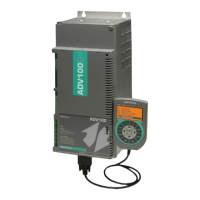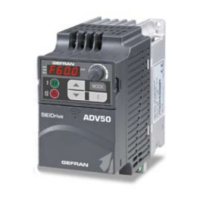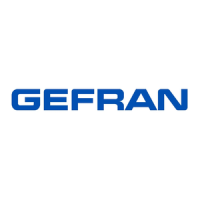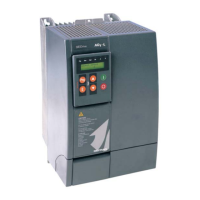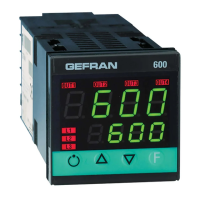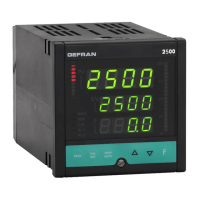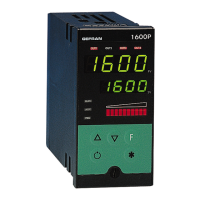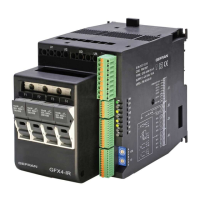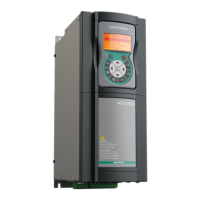AVy - HGB
Ch.3 46
3.3.3. AC Input current
NOTE! The Input current of the Drive depends on the operating state and the service conditions
of the connected motor, and the use of input reactors. The table 3.3.2.1 shows the values
corresponding to rated continuous service (IEC 146 class 1), keeping into account typical
output power factor for each size
3.3.4. AC Output
The output of the AVy Drive is ground fault and phase to phase output short protected. The switching
frequency is constant in the speed range and depends on the drive size.
NOTE! The connection of an external voltage to the output terminals of the Drive is not permissible!
It is allowed to disconnect the motor from the Drive output, after the Drive has been disabled.
The value for the continuous output current rating ( I
CONT
) depends on AC Input voltage ( K
V
), Ambient
temperature ( K
T
) and Switching frequency ( K
F
):
I
CONT
= I
2N
x K
V
x K
T
x K
F
(Values of derating factor are the listed on table 3.3.2.1)
with an overload capacity I
MAX
= 1.36 x I
CONT
for 60 seconds
The applicable deratings are automatically set when selecting the appropriate values of AC Input voltage,
Ambient temperature and Switching frequency.
Recommended motor outputs
The coordination of the motor rated powers with the Drive type presented in the table below refers to the use
of standard 4 poles motors with a rated voltage equal to the rated voltage of the input supply.
As for those motors with different voltages, the type of Drive to use is determined by the rated current of the
motor.
Motor nominal current cannot be lower than 0,3 x I
2N
. Magnetizing motor current must not be higher of
I
CONT
.
NOTE! For service conditions with overload higher than 150%, the nominal current must be
derated.
Table 3.3.3.1 shows nominal current values for typical service profiles (Ambient
temperature =40°C [104°F], standard switching frequency). For cycles with nominal
current applied after the overload, the minimum duration is also specified.
For cycles shorter than the minimum duration specified, the current following the overload
should be reduced to a level lower than the nominal, so that the RMS average over the
cycle does not exceed the continuous current, I
CONT
.
Similar criteria apply for operation with additional derating factors.
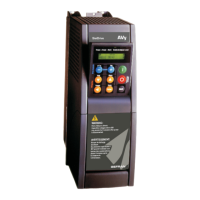
